Facing the brunt of Nashville’s humidity, summer storms, and winter chills, roofs in Music City are prone to a variety of issues that need timely attention. If you’re dealing with common roof issues in Nashville Tennessee, this article is tailored for you. We’ll pinpoint the typical problems like leaks, UV wear, and wind damage, and guide you through reliable repair techniques. Get ready to arm yourself with the knowledge to maintain a solid, weather-resistant roof over your head.
Key Takeaways
- Regular roof inspections and maintenance are necessary in Nashville due to a variety of climate stresses, including hot, humid summers and high precipitation, which can lead to discoloration, structural degradation, and water damage.
- Effective solutions for common Nashville roofing issues include addressing leaks early, preventing gutter overflow, reinforcing shingles against wind, and using UV-resistant materials to counteract sun damage.
- Proactive measures like trimming overhanging tree branches, correcting poor installation workmanship, maintaining flat roofs appropriately, dealing with wildlife-related damages, and planning age-related roof replacements are crucial for roof longevity.
Nashville’s Roofing Challenges: Understanding Regional Concerns
Nashville’s climate is a mixed bag that keeps homeowners on their toes. With a humid subtropical climate, the city experiences:
- hot, muggy summers
- mildly cold winters
- high humidity
- significant precipitation
The variety of stresses these conditions subject roofs to make it necessary to perform regular inspections and maintenance in order to avoid roofing problems and ensure the roof regularly withstands these challenges.
One of the most visually apparent issues is the color change in shingles, often a result of environmental factors like moisture and chemical reactions within the roofing materials. This discoloration is not just cosmetic; it can indicate underlying degradation that might compromise the roof’s integrity. As such, early detection and addressing of these issues can be achieved by engaging a professional roofer for regular roof inspections.
Battling Water Damage: Nashville’s Frequent Foe
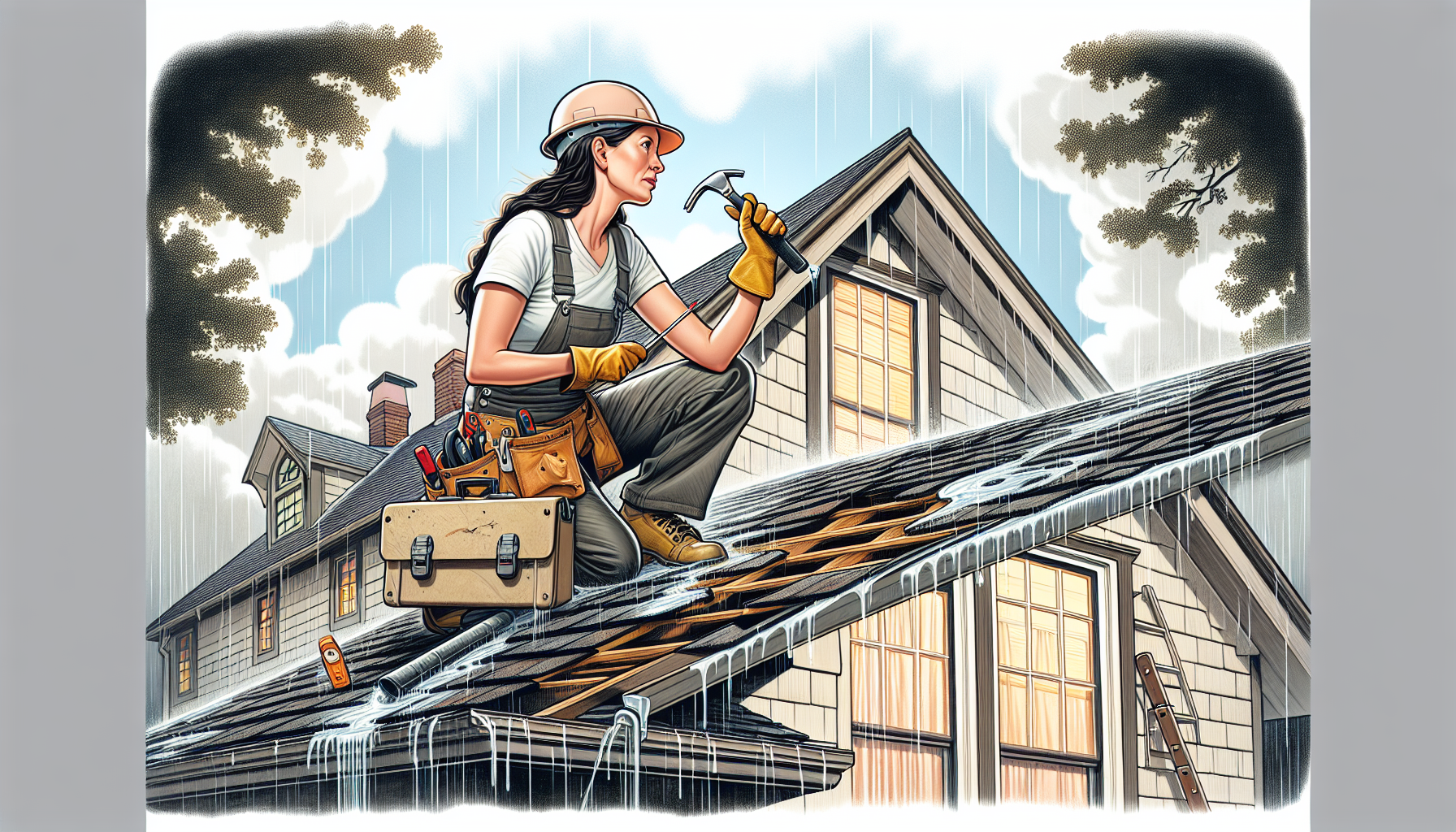
Water damage is a relentless adversary for Nashville homeowners, with roof leaks being a common problem due to the city’s high precipitation levels. Signs of water damage can be subtle at first, like small water stains on the ceiling or wet spots in the attic, but if left unchecked, these can lead to significant structural damage. Prompt repair of roof leaks is necessary to prevent further damage and avoid expensive repairs.
Water damage can result from:
- Leaking pipes or plumbing fixtures
- Roof leaks caused by worn shingles and damaged flashing
- Flooding from heavy rain or storms
- Poor drainage around the foundation of the building
- Condensation and moisture buildup
Regular roof maintenance, especially post-seasonal changes, can help identify vulnerabilities and protect your roof’s structure and longevity. Next, we will examine the key aspects of combating water damage.
Detecting Signs of a Leak
Detecting leaks early can save you from extensive water damage. Regularly inspecting the attic with a flashlight can reveal tell-tale signs of a roof leak such as water stains, mold, or black marks. Upon discovering any leaks roof, prompt engagement of a professional roofer to handle the repairs is recommended for efficient and correct fixing of the problem.
Dealing with Ice Dams
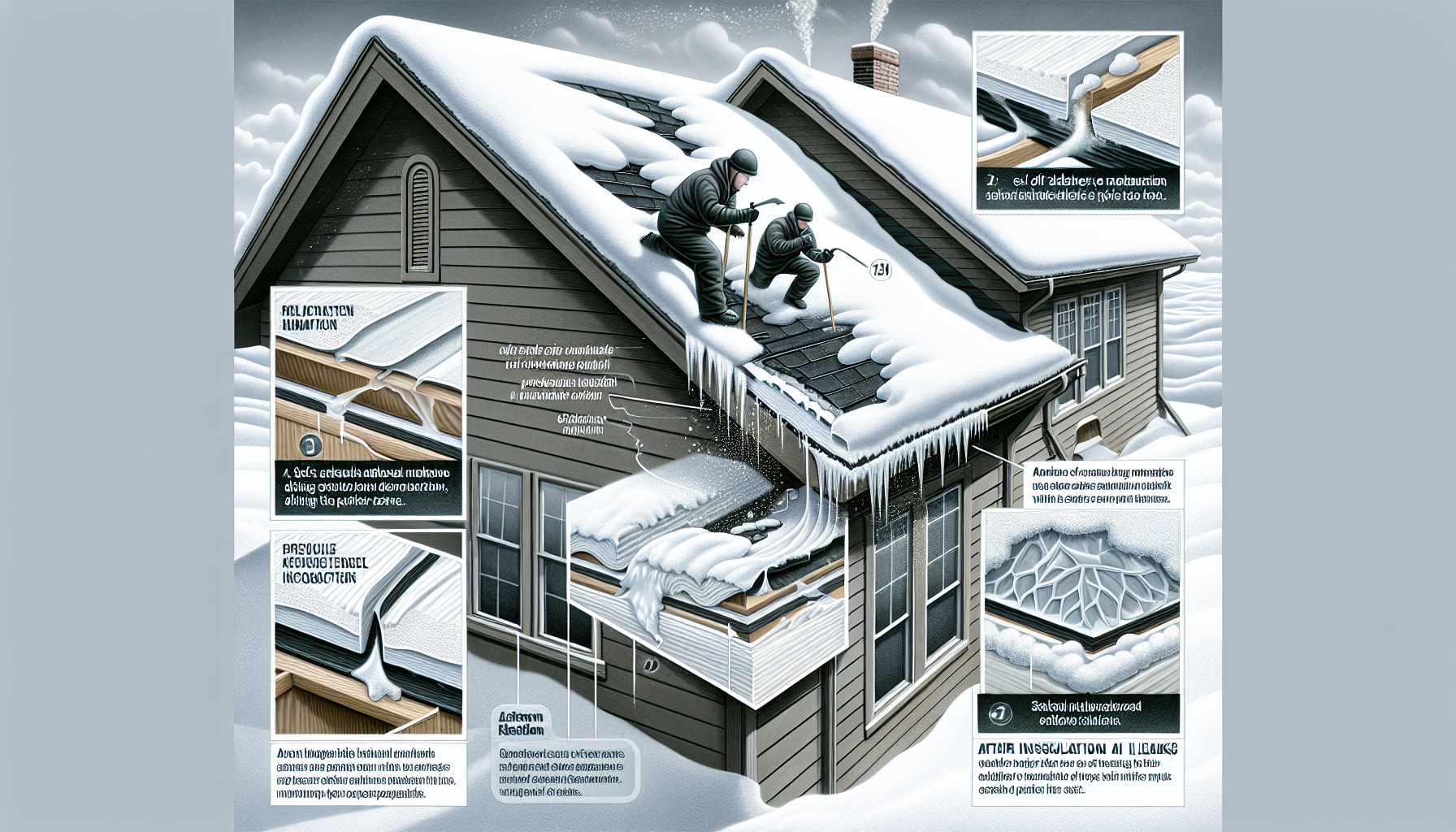
Ice dams can be a hidden menace during winter. They form when warm air from the attic escapes through the eaves, causing a freeze-thaw cycle that leads to ice accumulation on the roof’s edge. This ice can lift shingles and flashing, creating gaps for water to seep through.
To prevent ice dams, ensure your attic is well-insulated, seal any air leaks, and consider installing self-adhesive membranes along the roof’s perimeter.
Preventing Gutter Overflow
Gutter overflow can lead to severe water damage if not addressed. Some common problems that can cause gutter overflow include:
- Clogged gutters
- Defective gutters
- Leaks along the roof’s edge
- Backups and standing water
These issues can facilitate mold and algae growth and should be addressed promptly to prevent further damage.
To prevent this, clean your gutters at least twice a year, ideally in spring and fall, and consider installing gutter screens or a drip edge to keep debris out.
The Scourge of High Winds: Roof Vulnerabilities Exposed
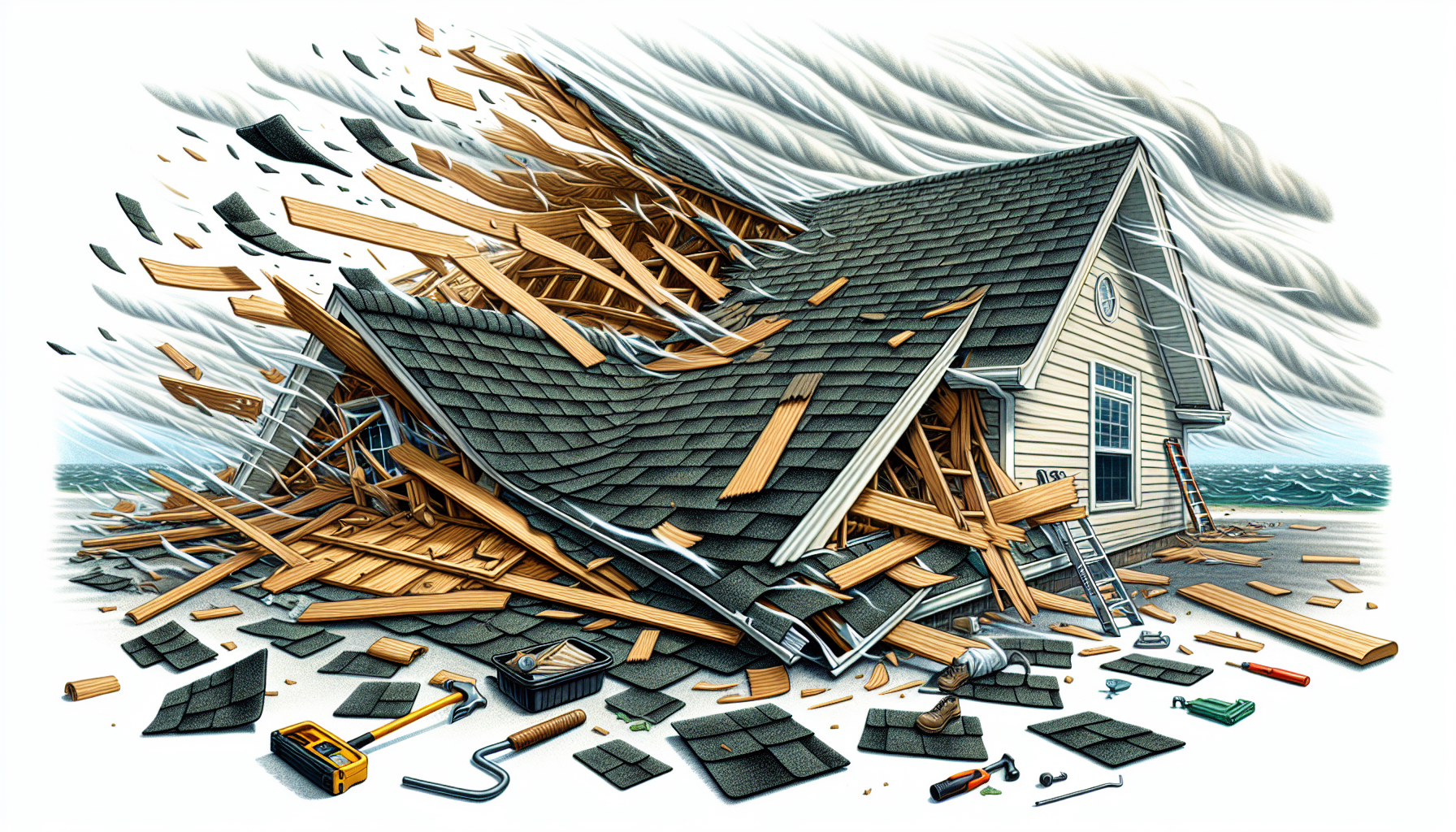
High winds are another challenge for Nashville roofs. Wind gusts, especially those over 40 mph, can curl or peel shingles and create blockages in vents. This not only affects the shingles’ integrity but can also lead to leaks and other roofing problems. Carrying out roof inspections post high winds is vital for addressing any immediate damage and halting its escalation.
Repairing broken or missing shingles is essential to restoring roof integrity. Debris driven under shingles by high winds can hasten the deterioration of the roof’s underlay. Next, we will examine methods of securing shingles and reinforcing flashing to combat wind damage.
Securing Shingles Against Wind
Proper nailing techniques during shingle installation can make a significant difference in resisting wind damage. Improper nailing can increase vulnerability to wind uplift, which may necessitate corrective work down the line.
Ensuring shingles are securely fastened helps maintain the roof’s integrity during high winds.
Reinforcing Flashing at Roof’s Edge
Flashing plays a vital role in protecting the roof edge and other vulnerable areas from leaks. Properly installed flashing keeps areas where the roof meets walls or chimneys sealed, preventing water infiltration.
Damaged flashing should be repaired or replaced immediately to ensure these critical connections remain watertight.
Sun Exposure and UV Rays: A Silent Adversary
The relentless sun can be just as damaging as any storm. Prolonged exposure to UV rays causes asphalt shingles to fade and degrade, leading to bald patches and granules accumulating in the gutters. Over time, this UV damage can compromise the roof’s protective capabilities, necessitating more frequent maintenance and replacement of shingles.
Routine roof maintenance can help detect early signs of UV damage, preventing the need for complete roof replacement. Next, we will discuss how to detect UV damage and select appropriate materials to counter it.
Recognizing Fading and Wear on Asphalt Shingles
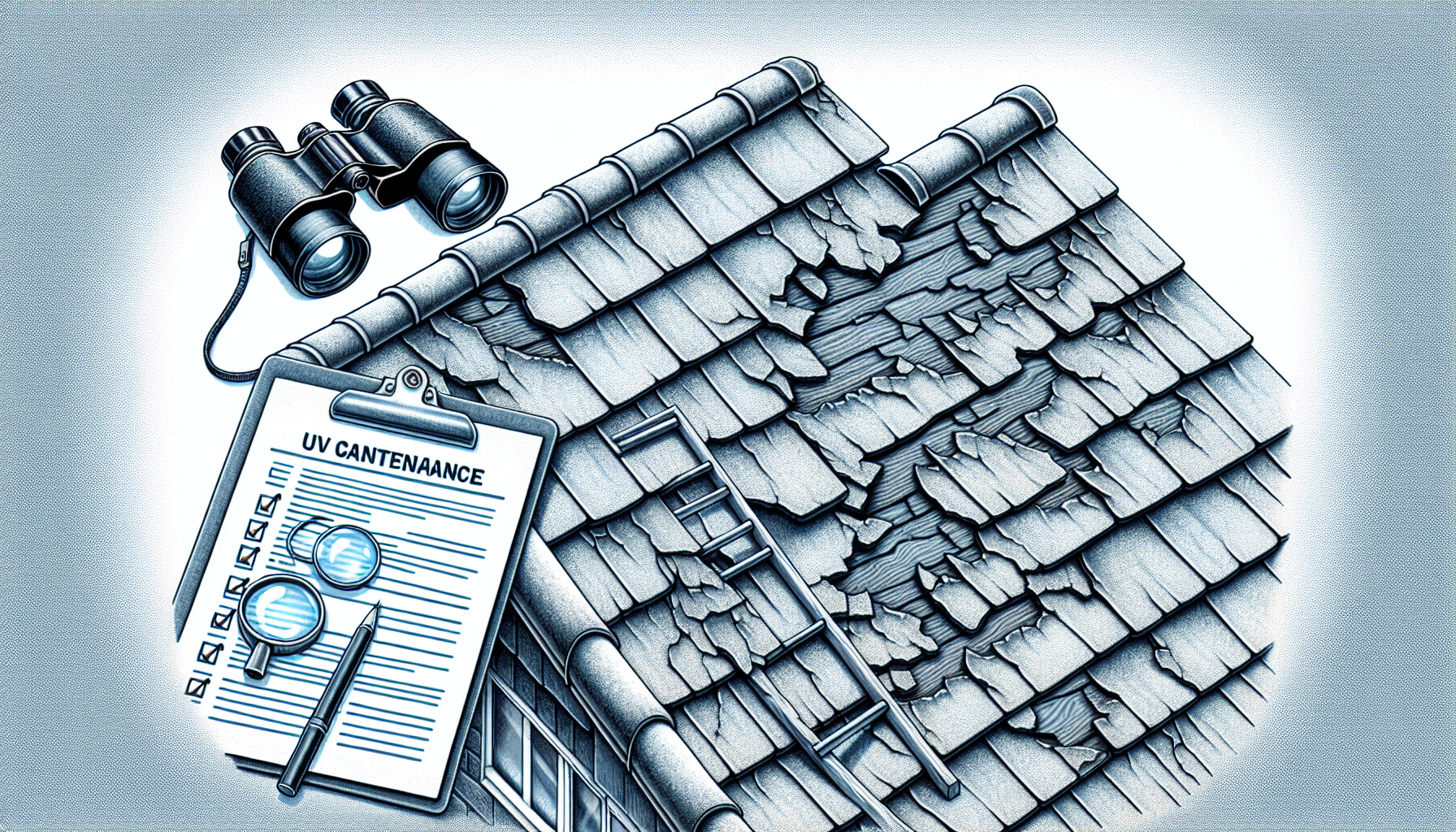
Regular roof inspections are key to spotting UV damage early. Look for signs like granules in the gutters, bald patches, and fading shingles. These indicators suggest that your shingles are deteriorating and might need replacement soon.
Choosing UV-Resistant Roofing Material
Opting for UV-resistant roofing materials can significantly extend your roof’s lifespan. High-quality materials like PLEXIGLAS with a UPF 50+ rating offer strong UV resistance, preventing excessive color changes and weathering.
Reflective coatings can also help reduce heat buildup, mitigating thermal shock during warmer months.
Vegetation Encroachment: Trees and Roofs Don’t Mix
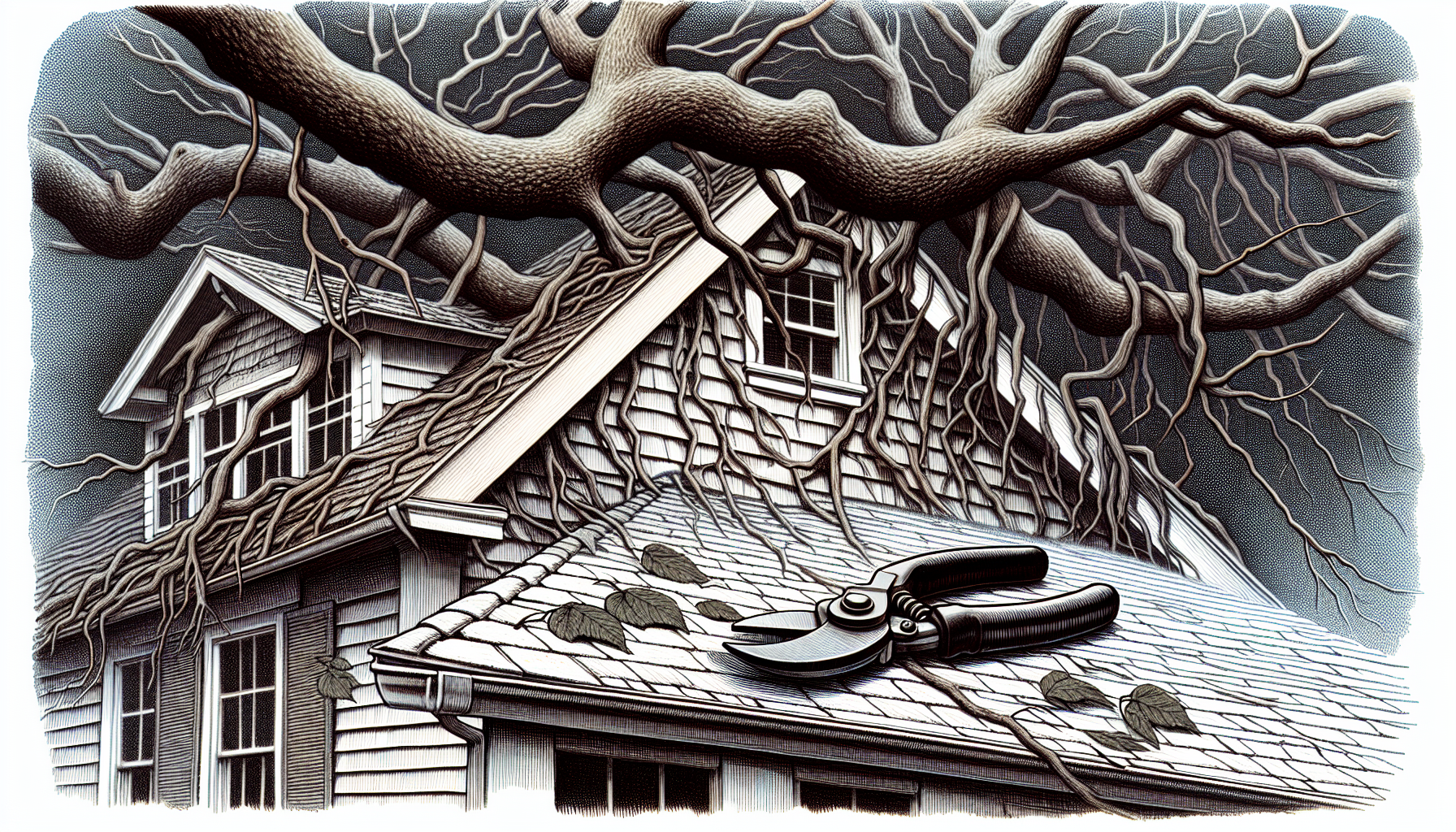
Overhanging tree limbs might add to your home’s aesthetic, but they can wreak havoc on your roof. Continuous contact from branches can abrade shingle layers, exposing the roof to further damage. Large branches, when they fall, can cause significant dents and structural issues.
To mitigate these risks, it is essential to:
- Regularly inspect your roof for any signs of damage caused by tree limbs
- Trim tree branches that are in close proximity to your roof
- Hire a professional tree service if the branches are too high or difficult to reach
By taking these steps, you can ensure your roof protects your home and prevent costly repairs in the future.
Strategic tree maintenance, including trimming overhanging limbs, can help mitigate the risk of both large and small branch damage. Next, we will discuss preventive trimming and evaluation of tree damage.
Trimming for Prevention
Hiring a professional for tree trimming ensures that overhanging branches are managed safely and effectively. Homeowners should maintain a distance of at least six feet between tree branches and the roof to prevent damage.
Regular pruning of young trees also promotes strong, stable growth.
Assessing and Repairing Tree Damage
If a tree falls on your home, follow these steps:
- Evacuate immediately for safety.
- After ensuring safety, assess the roof damage.
- Contact your insurance provider to report the incident and initiate a claim.
- Contact a local roofing company to schedule repairs.
- Seek professional tree removal services to safely remove the fallen tree and prevent further damage.
- Work with the roofing company to carry out the repair process.
Seasonal Shifts Causing Thermal Expansion and Contraction
Seasonal temperature fluctuations in Nashville can cause damage to roofing materials. Here are some potential issues:
- Colder weather can make shingles brittle
- Warmer weather can cause shingles to expand, creating gaps and risking leaks
- Extreme temperature changes can lead to material cracking
It’s important to be aware of these factors and take appropriate measures to protect your roof.
Regular roof inspections and maintenance are crucial to address these issues and ensure the roof’s longevity. Next, we will discuss the significance of inspections after seasonal changes and how to address material fatigue.
Inspection Post-Season Changes
Professionals recommend at least one roof inspection per year to ensure roof integrity. Regular inspections can identify early signs of issues like color change, deterioration, or structural problems, allowing for timely interventions.
Addressing Material Fatigue
Material fatigue from thermal cycling can cause hairline fractures, which can worsen with thermal shock. Promptly addressing minor issues through regular maintenance helps maintain the roof’s integrity and extend its overall lifespan.
Improper Installation and Poor Workmanship: The Human Factor
Improper installation and poor workmanship can lead to complex roofing problems and reduced material lifespan. Hiring experienced roofing contractors ensures proper diagnosis and repair, preventing further damage. Inexperienced professionals often create issues that require professional intervention to correct.
To prevent poor installation, homeowners should seek top roofing contractors with direct experience and engage in regular roof maintenance. Next, we will identify poor quality roofing jobs and discuss methods of rectifying them.
Identifying Subpar Roofing Jobs
Signs of subpar roofing work include:
- Damaged or missing shingles immediately after installation
- Mismatched shingles on a new roof
- Lack of uniform appearance
- Material inconsistencies
These signs indicate poor quality installation.
Correcting Mistakes
Corrective work on roofs, such as repairs or tune-ups, is important for maintaining roof integrity and preventing further damage. Professionals reattach curled-back shingles with asphalt roof cement and perform comprehensive maintenance, including fixing nail pops and replacing damaged shingles.
Maintaining Flat Roofs in Music City
Flat roofs in Nashville present unique challenges, requiring frequent maintenance and precise installation to prevent water stagnation and damage. These roofs are often made from weather-resistant materials like metal, EPDM, and TPO, which are well-suited to Nashville’s climate. However, issues like blocked decking can obstruct rainwater outlets, leading to standing water and further complications.
Proper drainage is critical for flat roofs. Ineffective drainage can lead to water pooling, which can cause leaks and structural damage due to mold, mildew, and deterioration of the roofing material. Next, we will discuss regular cleaning and inspection, along with professional solutions for issues related to water stagnation.
Regular Cleaning and Inspection
Engaging with established Nashville roofing companies for regular maintenance can prevent extensive damage and ensure a longer lifespan for flat roofs. Homeowners and maintenance teams should regularly conduct visual inspections on flat roofs to identify early signs of wear such as cracks, blisters, or seam separations.
Professional Solutions for Ponding Issues
Professional roofers follow strict safety and quality standards when repairing flat roofs to resolve problems with stagnant water.
The application of waterproof coatings on the surface of the flat roof not only protects but also improves the roof’s overall durability against water damage.
When Wildlife Wreaks Havoc: Animal-Related Roof Problems
Wildlife can cause significant roof damage, creating unexpected problems for homeowners. Roof rats, squirrels, and raccoons are common culprits that can damage shingles and spread diseases or trigger allergic reactions. Preventive measures and repairs are essential to protect your roof from these critters.
Homeowners can either eliminate pests on their own or hire a local rodent exterminator to address roof damage. Next, we will discuss effective methods to prevent and repair animal damage.
Preventive Measures Against Critters
Installing physical deterrents such as spikes or mesh can keep animals away from roofs, preventing damage. A roofing contractor can repair damage caused by animals and advise on or install preventive measures.
For ongoing pest problems, collaboration between a roofing contractor and an extermination company may be required for a long-term solution.
Repairing Animal Damage
Sealing all entry points used by animals prevents them from returning after repairs are complete. Identifying and replacing roofing materials damaged by animals, such as chewed shingles or degraded underlayment, is crucial.
A thorough inspection of the entire roof to identify any signs of animal presence or damage, such as nesting materials or droppings, is essential.
Age-Related Wear: Planning Ahead for Roof Replacement
Aging roofs may require replacement, and proper planning and material selection can ensure longevity. A roof that has been in place for 20 years or more, or appears old and worn, may have reached the end of its useful life and should be inspected for possible replacement. Indicators such as curling shingle edges, bald spots where granules are missing, and cracked shingles suggest that a roof may need to be replaced.
In Nashville, popular durable roofing materials include:
- Asphalt shingles
- Metal roofing
- Synthetic shingles
- Cedar shakes
- Slate tiles
Next, we will discuss how to determine when roof replacement is necessary and how to choose materials that will ensure longevity.
Knowing When to Replace
When the cumulative cost of maintenance and repairs consistently surpasses the expense of a new roof installation, homeowners should consider replacing the roof. Assessing these costs helps homeowners make informed decisions about roof replacement.
Choosing the Right Materials for Longevity
Choosing durable, long-lasting roofing materials can help extend the life of a roof in Nashville’s climate. Asphalt shingles are the most common roofing material in Nashville, available in 3-tab, architectural, and luxury variants. Synthetic shingles, made to resemble cedar shake or slate roofs, are a newer durable roofing option.
Summary
In summary, Nashville’s unique climate presents a variety of roofing challenges, from water damage and high winds to UV exposure and wildlife. Regular roof maintenance, timely repairs, and the use of durable materials are essential to safeguard your home. By addressing these common roofing issues proactively, homeowners can ensure their roofs remain resilient and long-lasting. Take action today to protect your roof and, in turn, your home.
Frequently Asked Questions
What are the common signs of a roof leak?
If you notice wet spots on the ceiling, growing stains, wet insulation in the attic, or stained members like sheathing or rafters, you may have a roof leak. It is important to address these signs promptly to prevent further damage.
How can I prevent ice dams on my roof?
Prevent ice dams on your roof by insulating your attic, sealing air leaks, and installing self-adhesive membranes along the roof’s perimeter. This will help to prevent the formation of ice dams.
What should I do if a tree falls on my roof?
If a tree falls on your roof, evacuate for safety, then assess the damage and contact your insurance provider and a local roofing company for repairs.
How often should I inspect my roof?
You should inspect your roof at least once a year to ensure its integrity.
What are some durable roofing materials for Nashville’s climate?
For Nashville’s climate, popular durable roofing materials include asphalt shingles, metal roofing, synthetic shingles, cedar shakes, and slate tiles. Consider these options when choosing the best roofing material for your home.